In the historic courthouse in Wiscasset, Maine, a highly contested trial in late 1836 drew an audience of Lincoln County locals along with legal bigwigs from southern Maine. The state charged Dr. Moses Call of Nobleboro with abortion performed upon Deborah Chapman, age twenty, “a female quick with child.” After a week-long trial the jury found him guilty, with sentencing suspended to allow an appeal.
The Trial That Sparked Maine’s 1840 Abortion Statute
Maine passed its first abortion statute in 1840, not long after the pardon of Dr. Call. Could there be a connection?

I recently chanced upon abundant documentation of Call’s case in the Digital Maine Repository of the Maine State Archives. Immediately I recognized how unusual it was. For several years I’ve been hunting up abortion stories carried in U.S. newspapers before 1860, amassing well over 230, the vast majority occurring after 1845. Stories deemed newsworthy typically started with a dead woman and a coroner’s inquest. Surprisingly few progressed to trial and fewer still to conviction. Nonetheless, dramatic accounts entered the news stream, commanding regional and national reprintings.
This Maine case was different: it was conspicuously missing from any and all newspapers, the woman did not die, and no coroner was involved. The convicted doctor appealed the verdict unsuccessfully and then sought pardon from the governor. He submitted dozens of sworn depositions along with petitions signed by over six hundred men and women in Lincoln County, drawing their opinions solely from oral information networks. And the orchestration worked: Dr. Call was pardoned.
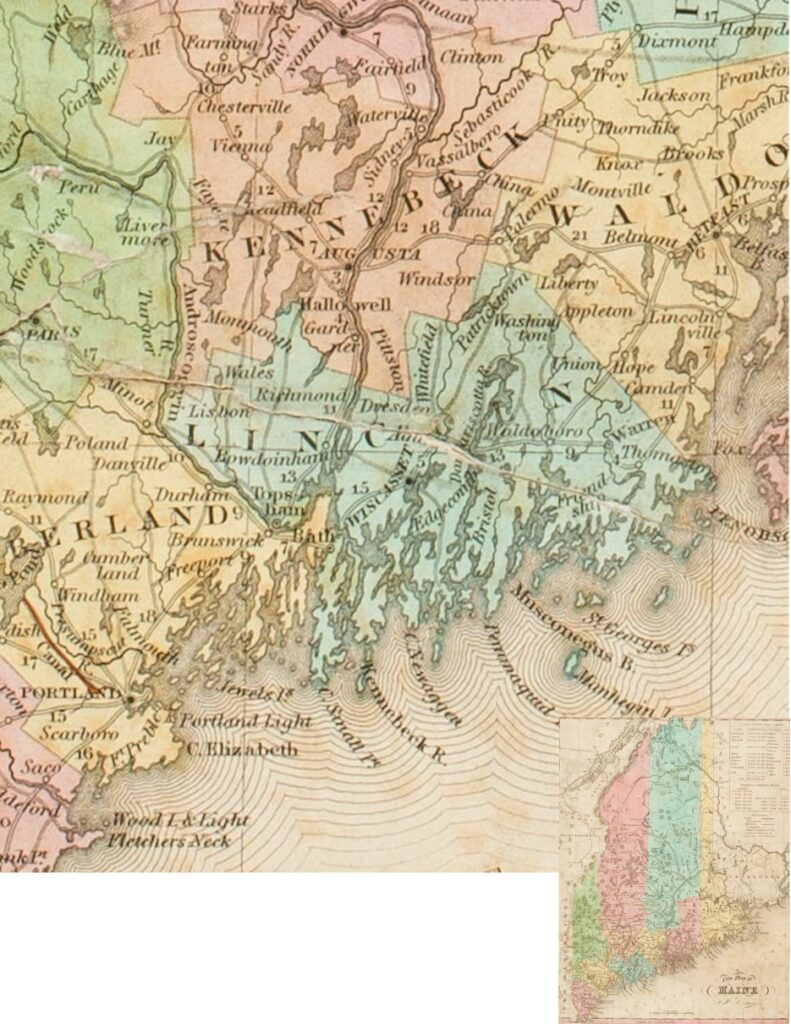
This extensive pardon file is rare and revealing. It contains detailed depositions from Deborah and her family. It presents community voices, medical evidence, and commentary from prominent legal spectators. It all happened in a time and place that was teetering between the old common law and Maine’s first statute criminalizing abortion.
That’s what immediately excited me. Dr. Call was charged under Anglo-American common law, which held that only post-quickened abortions were criminal. (Quickening occurs halfway through pregnancy when the mother first feels fetal movement.) Maine passed its first abortion statute in 1840, not long after the pardon of Dr. Call. Could there be a connection?
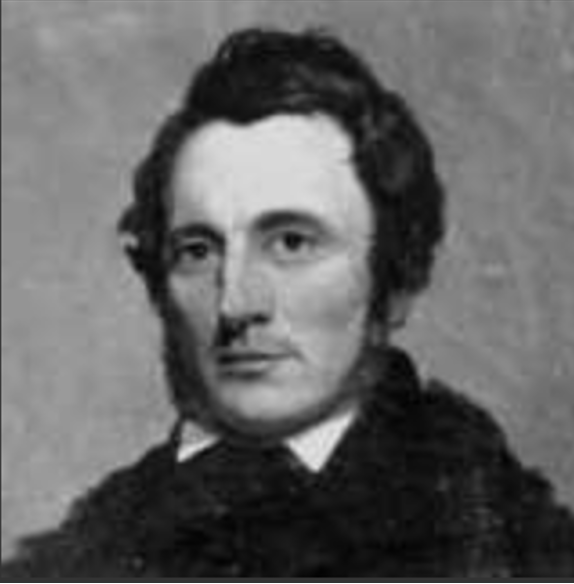
Before 1840 only three states (New York, Ohio, Missouri) explicitly criminalized abortion in the first half of pregnancy, adopting statutes that retained the common law’s prohibition on post-quickened pregnancy, where a “child” was “destroyed,” and adding a more lightly penalized section covering the procuring of a “miscarriage” on “any pregnant woman.” Nothing in those three states’ newspapers or legislative debates indicates that abortion was a salient public issue, and until now this has seemed to be Maine’s story as well. The new laws emerged during routine legal code revisions, and the dualism of child destroyed/miscarriage procured found in New York in 1828 became a template that other states borrowed. Maine too borrowed this wording, but it broke new ground in completely discarding quickening while introducing a concept labelled “attempted” abortion. My excitement grew when I learned that the judge in Call’s trial, the Hon. Samuel E. Smith, was just ten months later appointed to the small commission charged with statute revision. Bingo: a direct connection between trial and new law.
Finding this kind of connection is important for critiquing the historical reasoning of the Dobbs v. Jackson Women’s Health Organization decision of 2022. The Dobbs decision pointed to the gradual accretion of new state statutes from the 1820s to the 1880s to bolster a claim of widespread moral abhorrence of abortion in all stages of pregnancy because it ended pre-born life. Alternate explanations advanced by historians include concerns over patient safety, support for pro-natalist policies, alarms about wives shunning maternity, and rivalry with non-mainstream medical providers. Further, the Dobbs decision paid no heed to subtle variations in the new laws, variations that signal the thinking behind statute creation. We know far too little about the circumstances that produced those earliest laws, and, except for New York City, we know little about actual enforcement. This Maine trial, remarkably documented, affords us a view of both public and legal thinking about early abortion law in the U.S. (see the American Historical Association and Organization of American Historians Amici Curiae brief in the Dobbs case).
Dr. Moses Call was thirty-one years old and single when he was charged. A New Hampshire native, he attended medical schools in Hanover, New Hampshire, and Pittsfield, Massachusetts, before opening a practice, around 1834, in Damariscotta, Maine, a small river village then situated in the township of Nobleboro, which had a population of 2,000. The township was rural but not isolated. Ports on the Atlantic, fourteen miles downriver, launched ships constructed in Damariscotta, while the first federal Post Road (historic Route 1 today) sliced through Nobleboro on its ambitious course from eastern Maine all the way to Florida.
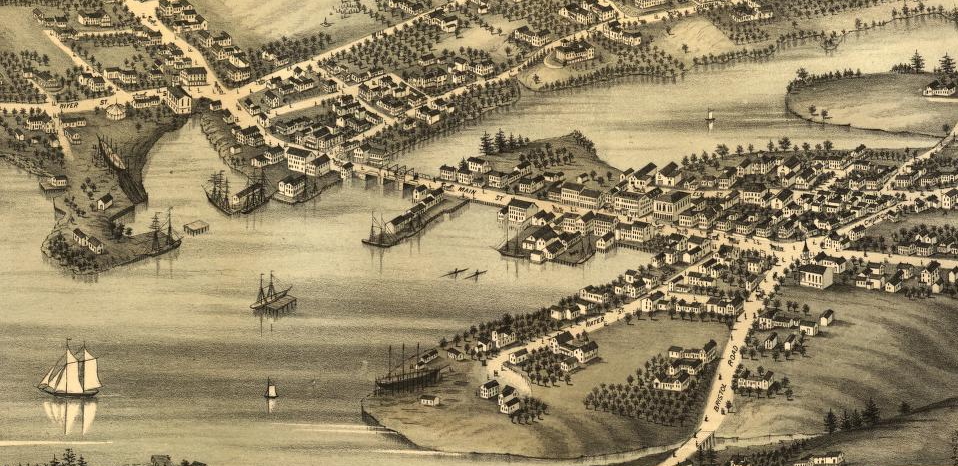
While we lack newspaper coverage of this trial, the pardon file supplies a rough narrative of the alleged crime, as framed post-trial by the defense lawyers. Crucially, we don’t hear the prosecution’s case in these documents, except by indirection and also by the formal indictment. Yet that case won victory at trial and on appeal. What was being strategically finessed or omitted from the pardon file?
One thing not omitted was the startling and violent language of the full indictment. “The said Call . . . with force and arms, did unlawfully, knowingly, and inhumanly, force and thrust a certain surgical instrument up and into the womb and body of one Deborah Chapman . . . she then being quick with child.” (This language came word for word out of a legal treatise published in Maine a year earlier, lifted from a British treatise of 1816.) The indictment placed this forceful event on July 17th. On July 18th, Chapman allegedly “brought forth the said child . . . dead.” To this charge, Dr. Call insisted he was completely innocent, and Deborah and her family insisted she never was pregnant. Yet he was found guilty.
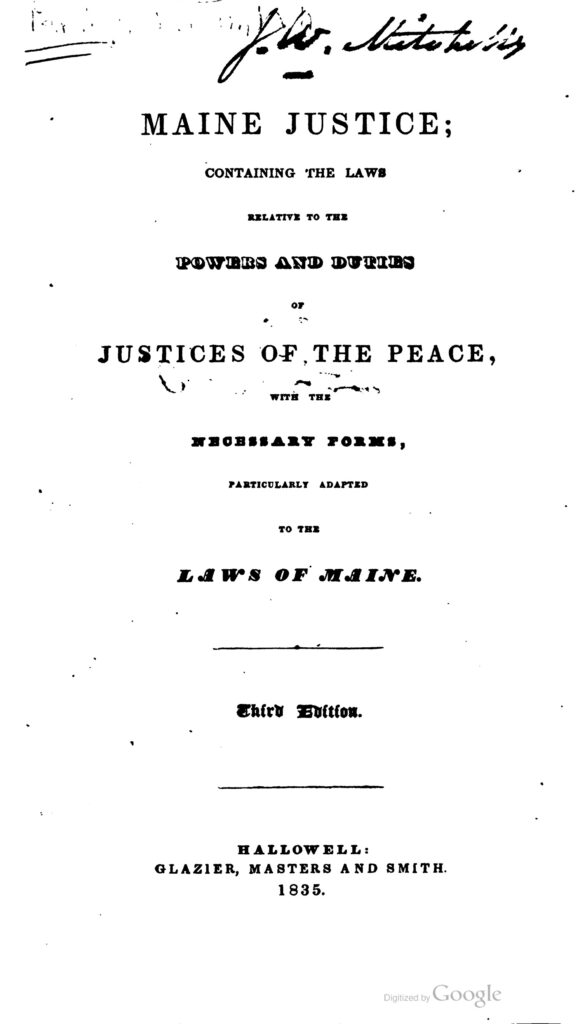
Fourteen deponents living near Deborah’s parents, Thomas and Abigail Chapman, testified that they saw the young woman frequently that summer and never judged her to be pregnant “by her form or dress.” The assumption was that a post-quickened pregnancy was visible. Several had visited her father’s house on July 18th, a Monday, when Deborah was “unwell” and Dr. Call was summoned. Some recalled seeing her industriously washing floors and churning butter, tasks that were inconsistent in their minds as a prelude to the intense contractions of labor.
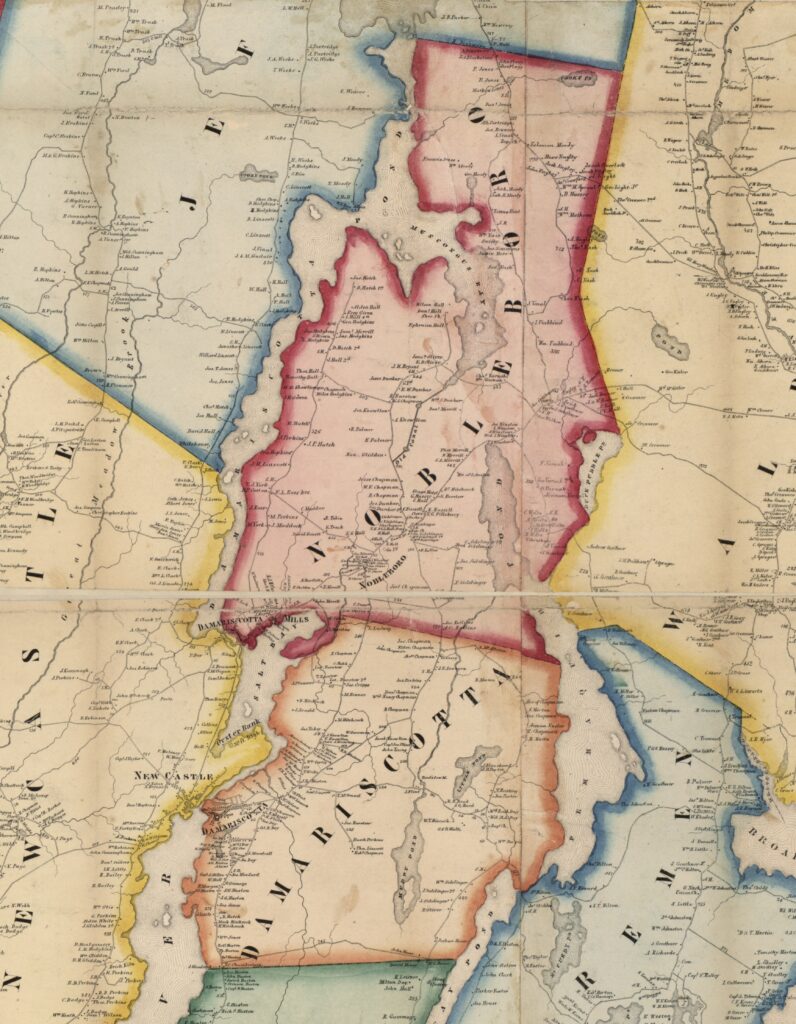
Five detailed depositions from Deborah’s immediate family focused on the events of July 18th. Her mother watched Deborah carry heavy buckets of water from a distant well. The girl helped prepare the midday dinner and ate it, but soon “was taken sick” and went to bed upstairs. Both parents stated that she was late on her “monthly returns,” something not unusual for this young woman of “slender constitution,” according to her father. “She has never been a rugged girl,” the mother said; Deborah had “the habit of passing her times”—missing her periods—“for a month or two and then she is always very sick.” So there was an established pattern of missing her period followed by a heavy flow. After visitors left, the girl moved to a downstairs bedroom, where her pain worsened.
In the late afternoon, Dr. Call arrived and stayed just over an hour. He joined the family at tea, after administering a pain medication that quickly made the girl “easy.” The family described who was in and out of the room, concurring that Dr. Call was alone with Deborah for only five minutes. Afterwards, the brother entered and observed no blood on the doctor’s hands. He saw bottles in the doctor’s portable medicine chest but no visible instrument. The doctor departed, leaving additional pain medicine for use as needed. The next morning, Deborah was fine, her appetite restored. The older sister did the laundry on the 21st and observed nothing unusual, namely blood, on Deborah’s underclothes. The sisters shared a bed; a pregnancy or abortion could not have escaped notice, the older sister insisted. No one was asked or volunteered when her “monthly returns” arrived.

Deborah’s deposition, as funneled through the Justice of the Peace recording it, sounded strident and firm, perhaps more so than while giving testimony in the witness box, often an intimidating experience. She emphasized she had recurrent problems with “painful menstruation.” She was alone with the doctor for just five minutes. Never once in her life had she been to his office, she said, though she had seen him several weeks before the 18th (a point left unexplained). She had never “been with child in my life,” never delivered one, never had an abortion. Her emphatic declaration stopped short of proclaiming she had never had sex. She also described a visit by Henry Chapman, twenty-five years old, and Harrison Chapman, twenty-three years old, both first cousins to each other and to Deborah. By now, she knew that gossip about an abortion was circulating. She confronted Henry, who vehemently denied instigating rumors. (Also absent from her deposition: any hint that she and Henry had once been courting.) Henry blamed the rumors on Abraham Chapman, an uncle to all three who lived close by.
Deborah further stated that Abraham soon came by and insisted that Dr. Call was the source of the rumors. He outlandishly claimed that Call was showing the fetal remains to select others. (Criminals usually try to hide proof of their crimes.) Abraham offered Deborah, she said, an astonishing $500 to play along in a plot to land the doctor in state prison “where he should have gone years ago,” a dark hint at a career of criminal acts. Her sister Sally, present in this interchange, described Abraham as abusing Call “in language of the coarsest and vilest kind, heaping epithets of all kinds upon him.” Deborah rejected the bribe, concerned that Abraham and others were determined to wrong Dr. Call, “who at least in this affair is innocent.” Was the phrase “at least” a careful legal hedging by the recording Justice of the Peace, or was Deborah herself shrewdly distancing her own claim of innocence from a doctor of questionable reputation?
A bundle of pardon depositions revealed apparent malfeasance during the trial in a Wiscasset lodging house hosting an inappropriate mix of guests. Lodgers included Abraham and Henry, the prosecution’s star witnesses, along with two more Chapmans, youthful cousins Harrison and Michael, witnesses for the defense. An additional three lodgers were potential jurors summoned for duty. Harrison, Michael, and one juryman deposed that Abraham and Henry openly discussed the case with one and all. Abraham treated the jurymen to liquor, and he and Henry each bunked with a juror. The deposing juryman withdrew from the jury panel feeling he had heard too much, but the other two served. There was a clear implication that one had taken a bribe for his promise of a guilty verdict.
A crucial prosecution exhibit was a note in Dr. Call’s handwriting advising on patient care and referencing something expelled—the “it.”
If you should flow, that is bleed much, take a table spoon full of the large phial every 15 minutes till it stops – you will not flow till it is away . . . . After the flowing has stopped, should you have pain, take 50 drops, that is a small teaspoon full of the small phial every hour till easy.
We don’t know which medical expert the prosecution called to explain these sentences as instructions for recovery from an instrument abortion, as the indictment specified. From my reading of many scores of criminal abortion stories, I know the typical moves: after a pregnant woman’s uterus was probed in a doctor’s office, she went elsewhere to await contractions and expulsion a day to a week later. These instructions could in theory map to that scenario as post-operative care.

After the trial, the pardon team found a physician a county away who flatly declared that only an ignorant person could mistake this as a recipe for abortion. Dr. Call’s prescription, he wrote,
is not in my opinion what one conversant with abortion would direct were he desirous of accomplishing it; . . . further it is my opinion that such directions as the above would be strictly in accordance with good practice for a variety of difficulties about the uterus and vagina such for instance as Polipus, Mole, etc.
Uterine polyps and moles were standard entries in obstetrics texts of the time. A mole is now understood to be a blighted but still-growing embryo, requiring induced removal if no natural miscarriage occurs. If the first vial contained ergot, this instruction might plausibly work. Ergot, a fungus that grows on rye grain, actually intensifies uterine contractions and was used to speed up slow labors. Physicians disagreed about its efficacy as an abortifacient in mid-pregnancy.
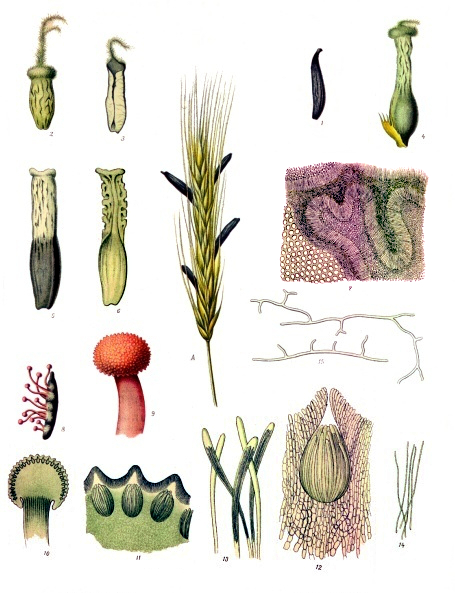
At trial the prosecution linked this scrap of paper to Deborah Chapman through testimony by Henry, who claimed Dr. Call left it tacked on his door early on July 17. A close neighbor flat-out disputed this in the pardon case: Mrs. Ann Curtis claimed that Dr. Call wrote this prescription for her womb complaint three years before. Emphasizing that she was a mother of eight (so definitely not one to seek abortions), she stated that “something unnatural grew” in her womb, “which after a number of days came away. It was not a child, nor anything like an abortion.” In short, a miscarried mole. A heavy flow with pain ensued, hence the prescription. Sometime later, she said, unruly children raided a desk and scattered papers outside, and the prescription was lost. If this was true, someone living nearby—for example, Abraham—might have found it and hatched a scheme to convict Dr. Call.
More depositions from farmer Nathaniel Bryant and others placed Call four miles northeast of the village on July 17th from 9 a.m. until late in the day, with dated receipts and calendar notation as confirmation. A final set of depositions came from Wiscasset townspeople who observed Abraham and Henry contaminating jurors in several stores during the trial.
These were very effective pardon documents: the girl was not visibly pregnant, she had little private contact with Dr. Call on her “unwell” day, he had a seemingly airtight alibi for the 17th, and she was offered a huge bribe by an unpleasant uncle who detested Call. Taken together they suggest that no abortion ever took place.
The unusual presence of prominent lawyers and judges at the trial suggests that this event was something out of the ordinary. The most notable was the septuagenarian judge Prentiss Mellen, who traveled fifty miles from Portland to sit in the courtroom. Mellen was once a U.S. senator and served fourteen years as the chief justice of Maine’s Supreme Judicial Court. Mellen expressed great surprise at the jury’s guilty verdict. Another spectator, Lincoln County State Senator Lucius Barnard, declared it a “strong case” for a pardon. Erastus Foote Esq., who once served as Maine’s attorney general and was now a counsel to Call, characterized the evidence of Deborah being quick with child as “quite insufficient.” “Even the abortion, on the testimony, was contradictory and doubtful.” Deborah’s quickness was not substantiated, Foote thought, but he was less certain about the abortion.

Another spectator, probate judge Nathaniel Groton, asserted there was “no evidence” of any abortion, and besides, was it really criminal? Abortion was something “our legislature have never seen fit to enact any statutes upon.” Nor did the public want to see more stringent laws on this, he claimed in this somewhat convoluted sentence: “The offense, if committed, has none of those urging [urgent?] demands upon the laws for punishment, to be found in our statutes.” The Hon. Josiah W. Mitchell from Freeport, co-counsel to Call, expressed “outrage and astonishment” at the verdict. He named Henry Chapman the central witness and villain of the trial, “a base, vaunting wretch who had often boasted of his success in the seduction of females.” Mitchell said that Henry implicated himself in Deborah’s alleged pregnancy.
If all these pardon documents were truthful and complete, then how did this case ever get cleared for trial? That was the job of a grand jury and the state’s attorney, one Edwin Smith. One deposed grand Juror revealed that only five people appeared before it: two doctors, Abraham Chapman and wife, and nephew Henry. The doctors were, legally speaking, duds: Dr. Albert Clark of Bristol admitted he “knew nothing of the facts, but said he could prove the crime by other witnesses”; Dr. Samuel Ford of Damariscotta said “he knew nothing except for hearsay.” Somehow the intemperate Abraham and the unreliable Henry came off as men of probity to the grand jury.
Perhaps Henry gained credibility with the grand jury by telling them a story he later told under oath in 1842. Henry maintained that Call approached him shortly before Henry’s testimony at the 1836 grand jury to offer the younger man a substantial bribe to keep silent about Call’s acknowledged role in the abortion. Why Henry took this claim to a Lincoln County prosecutor six years later is unknown. That attorney followed through and charged Call with subversion of justice by inciting perjury. Evidently pockets of animus still dogged Call. A jury trial ensued and quickly found the charge meritless. But it might well have swayed the 1836 grand jury.
That the doctors Clark and Ford led off the grand jury inquiry is very revealing, despite contributing no material facts. Many depositions by neighbors obliquely referenced a malicious backstory which they believed accounted for a sham trial. Clearer details came from two attorneys, Mitchell and Mellen. Defense counsel Mitchell referred to a prior lawsuit over slander—“defamation of character”—brought by Call against Clark, who lost, after which angry handbills and “a garbled pamphlet” attacking Call went public. Mitchell advised his client to delay the abortion trial to let the clamor die down, but Call insisted he needed to clear his name. Mitchell was sure the abortion trial was “got up” over “vindictive feelings.”
The Hon. Prentiss Mellen also attacked Clark and Ford. Call had been “grossly slandered in his professional character” by these two men, Mellen told the governor, and he had reason to know, because he represented Call in the slander trial, winning “a handsome verdict for damages.” That probably explains why he made the trip to witness the abortion trial of his one-time client. After the guilty verdict, Call rehired Mellen to appeal his case to the Supreme Judicial Court. Mellen was confident of victory: what better lawyer than the venerable ex-chief justice, facing three younger justices he had once mentored?
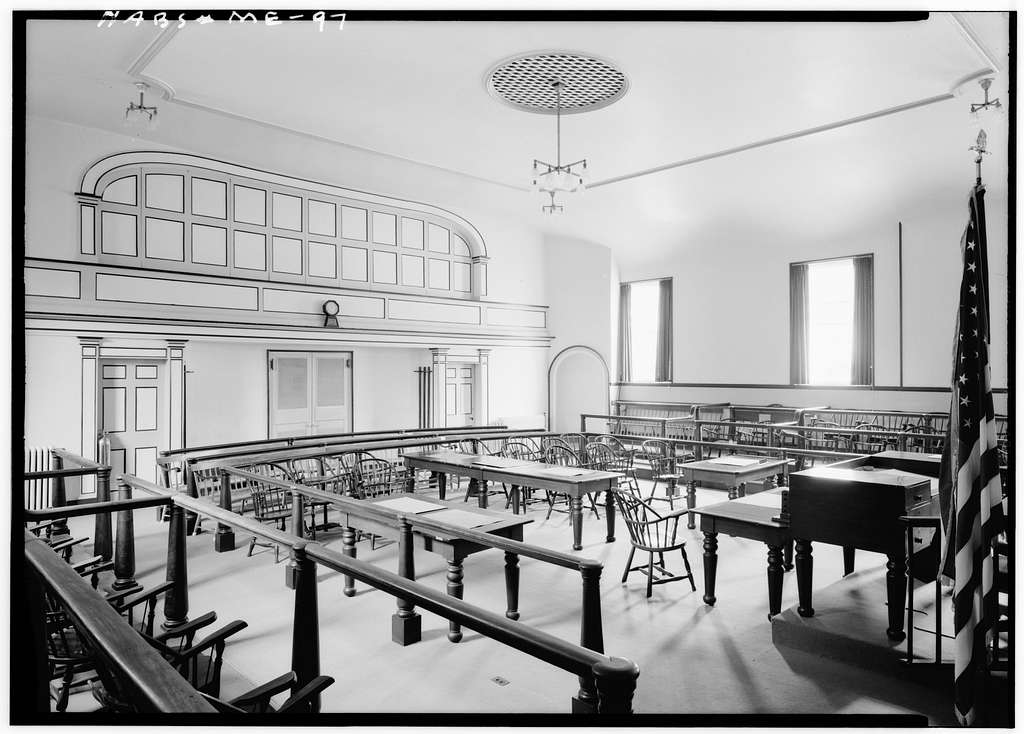
Mellen expected to win a new trial with a two-pronged attack. He mounted a procedural challenge relating to law and he presented evidence of jury tampering. The court ruled he could pursue only one path, not both, at the defense’s choice. Mellen went with tampering and was surprised when the high court ruled that the claim was not fully persuasive and lacked rebuttal testimony. Mellen and Call lost the appeal.
An appeal must be based on legal error. Mellen could not argue that Deborah was not quick with child, or not pregnant at all; that was a matter of fact decided by the jury, not to be relitigated. How did the jury conclude she was quickened, the criterion essential to the common-law crime? Ordinarily, there were several ways: witnesses could attest to a visible pregnancy. If the woman dies, an autopsy can reveal the size of an enlarged uterus. Fetal remains can show gestational age, as can ascertaining the date of the last menstrual period. I’ve seen all these strategies in other trials, but none apply here, because Deborah was alive, evincing no physical evidence of the alleged crime. So how did Henry prevail, when Deborah’s family insisted she was never pregnant? More crucially, why was he accepted as a credible witness, if he impregnated Deborah as several deponents suggested? The alleged bribe of Henry by Call fuels suspicion: why would Call confess to Henry and then bribe him to keep it secret? Far more likely is that Call knew that Henry already knew, because they had conspired. In many cases I’ve seen, the presumed father who arranges the abortion can be charged as an accessory to the crime. Yet that didn’t happen; Henry was the star witness for the prosecution, and the jury bought his version.
Perhaps the slander trial with doctors Clark and Ford can help us. Strikingly, no depositions mentioned the substance of the slander. The team orchestrating Call’s pardon had to steer carefully. They needed evidence of sufficient preexisting malice to motivate a false abortion accusation, without replicating the actual slander lest it damage Call’s reputation with the governor. Groton, the probate judge who wondered if abortion even was illegal, handled the slander delicately in his letter to the governor. He praised Call as “a man of talents above the ordinary grade,” who “from the nature of his profession and the extent of his practice, has been the subject of considerable attention by his professional brethren,” costing him “great expense in defending himself.” What did he mean: “from the nature of his profession” and “great expense” to defend himself? This seems a broad hint that Call carried on a special sideline practice in abortions.
That seems very plausible to me. A career built on illegal procedures after quickening could raise concerns with other doctors. Dr. Ford practiced in Call’s village, so he was wired into the local reproductive grapevine—hearsay, he admitted—informing him about Call’s willingness to end pregnancies, quick or not. Possibly professional jealousy soured Clark and Ford. In the 1850 census, Dr. Call reported property value that made him the fourth richest man in Nobleboro, behind a few ship builders and a large storeowner. Doctors Ford and Clark were about the same age as Call, but his property value in 1850 was equivalent to theirs combined. It appears he had a lucrative practice. Finally, despite the “handsome verdict” Call won for slander, his lawyer knew suspicions lingered; hence the advice (unheeded) to postpone the Chapman abortion trial. Seen from this vantage, the whole point of the trial was to bring him down, and if it took $500 and $100 bribes, Clark and Ford were willing to pay, to see Call sent to state prison.
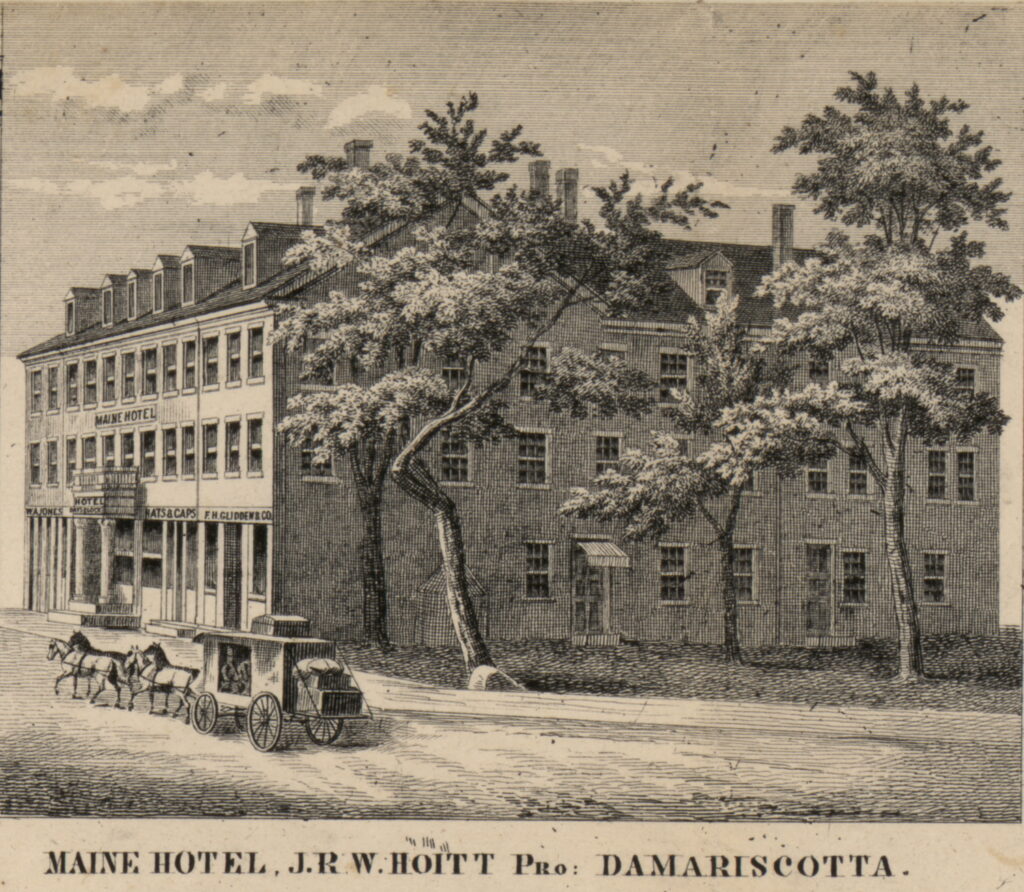
I see three plausible narratives of the events before the trial; perhaps there are more. In the first, Deborah was or feared she was pregnant by Henry, at a stage too early to swell her belly. The couple did not wish to marry, so Henry engaged Dr. Call. The procedure could have been an acknowledged abortion, or, if early enough, a common medical treatment to restore menstruation by removing blockage. The signs of early pregnancy were indeterminate, which is precisely why quickening was so crucial as the only legal proof of a living pregnancy. In this scenario, Deborah’s procedure perhaps took place a week or so before July 18th, in accord with her admission that she saw Call once then. Call’s open visit on the 18th thus addressed a rebound episode of cramps needing analgesics—or, more deviously, a staged episode of cramps, to keep the parents in the dark about why Deborah was missing her “returns.” It can take some weeks for menstruation to resume after an abortion or childbirth.
A second variation postulates an instrument abortion on the very early morning of the 17th, before Dr. Call rode west to his day-long alibi. Deborah’s intense household chores on the morning of the 18th could have been a tactic to hasten the miscarriage. I’ve encountered young women in my set of abortion stories throwing themselves down stairways or riding horseback, to hasten or provoke a miscarriage.
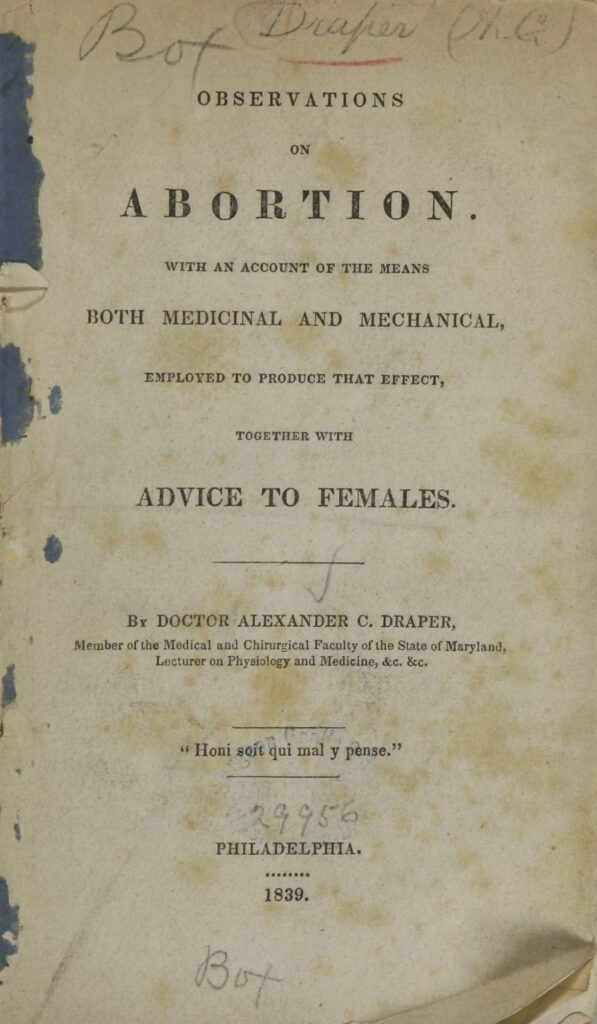
What does not at first square with either of these scenarios is Deborah’s fervent sworn testimony about never having been “with child” nor having undergone an abortion. Yet if she convinced herself that she was only having treatment for a delayed period, she could swear to these statements. The larger denial, of having sworn to no treatments at all by Call, is the stickler. Yet an unmarried girl in pregnancy trouble might conclude that a false oath was the best path to save her reputation.
The third scenario adopts the framing of the pardon case. Doctors Clark and Ford, hungry for revenge over their costly drubbing in the slander trial and angry over Call’s rumored willingness to perform illegal abortions, maliciously partnered with Abraham and Henry Chapman who were quite willing to lie under oath in exchange for bribes. In this scenario, Deborah never was pregnant. Henry at some point must have been truly courting her, to make the false pregnancy seem plausible. But why would he throw her under the bus like this, and ruin her reputation? Maybe he and Abraham assumed the enormous bribe would bring her on board. The uncle said as much, according to Deborah: he belongs in prison, everyone knows that, just say you were pregnant and collect an easy $500. Maybe she first agreed and then reneged?
The pardon process began as soon as the high court rejected Call’s appeal, in late November 1837. Most of the depositions were attested between Dec. 14th and 18th, and a few on the 20th. The governor and council issued their decision on Dec. 22, 1837, in Augusta, a good day’s ride away. It took me a lot longer than three days to make sense of these many documents, so I wonder if some fix wasn’t in already. The pardon went the whole distance, proclaiming Dr. Call not only exempt from punishment but completely innocent.
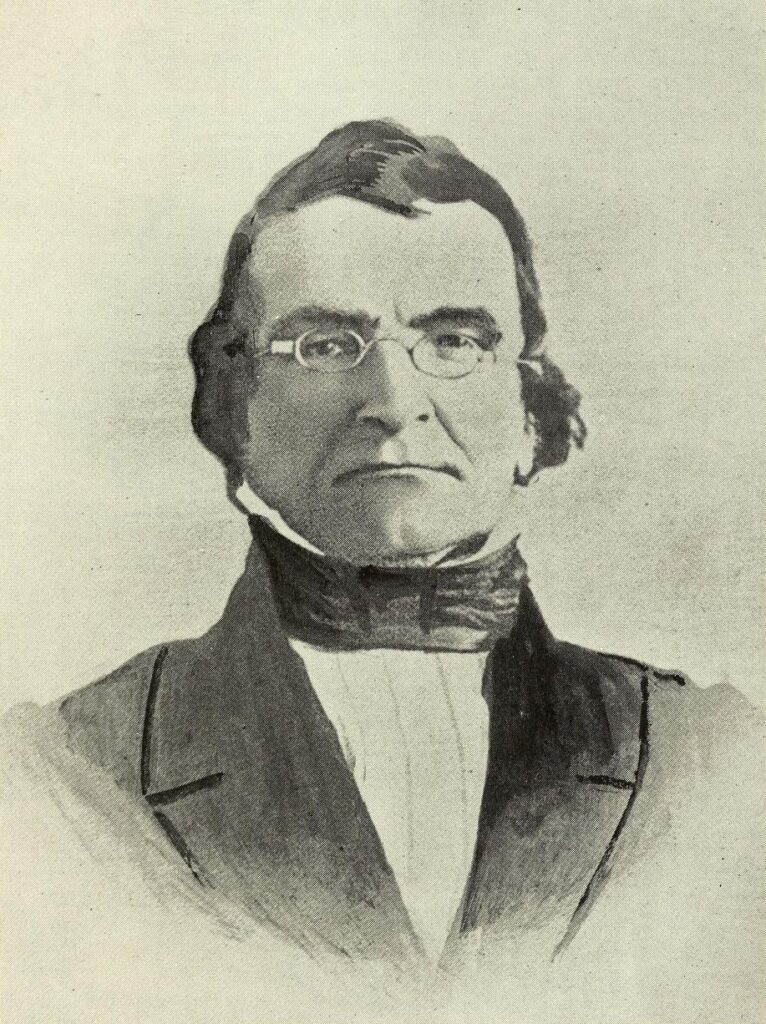
Meanwhile statute revision had begun in mid-1837. Judge Smith, prominent as a thrice-elected governor before he became a Lincoln County judge, joined the revision committee, soon aided by his brother Edwin Smith (the prosecutor of Call) and Prentiss Mellen (defender of Call in the slander and appeal cases). The job involved processing ten years of new law passed since the 1830 edition of statutes, editing and streamlining the whole, and suggesting new laws as well, to be vetted by the legislature. These three men had just endured a contested trial on the uncomfortable subject of a woman’s reproductive body, one that necessarily turned on the elusive concept of quickening. Despite representing opposing constituencies—the state, the plaintiff, the defendant—these three men found that actual quickening was difficult to establish in a case where the woman lived. So they scuttled the whole question, borrowing the two-part law from New York but with a key innovation: both sections applied to “any woman, pregnant with child, whether such child be quick or not.”
How then were judges and juries to decide which section of the law applied? I think the statute writers assumed the wording spoke for itself. The destruction of a child before birth called to mind an actual death of a recognizable child, and not a mass of tissue weighing under an ounce or two. In early gestation, it might not even be visible. The lesser offense provision punished an attempt with the intent to disrupt pregnancy, not the resulting disruption. This would cover cases where medicines given to induce abortion proved, not surprisingly, to be ineffective and the woman stayed pregnant. It could cover cases where indeterminant or invisible products of early conception were expelled. And it could even cover an operation on a chaste woman, as Deborah Chapman claimed to be. The statute writers crafted a way to charge and convict Dr. Call for operating on a woman who was not actually pregnant.
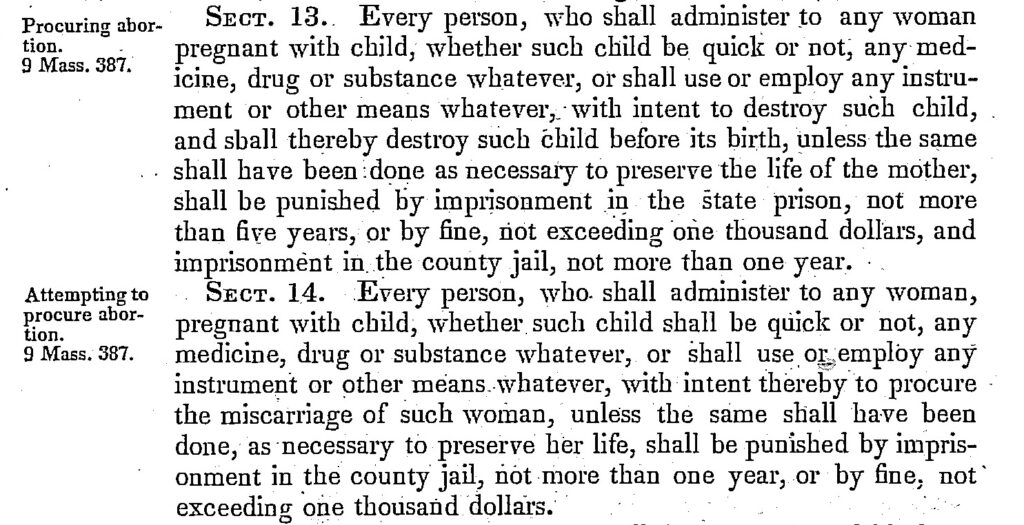
“Attempt” in fact became the summary word for this law. In the published statute book, there appears a marginal gloss alongside each section. The first tag was “procuring abortion,” and the other “attempting to procure abortion.” While the Dobbs decision was not wrong to put Maine’s law in the column of states penalizing abortion in all phases of pregnancy, the actual crime it calls “miscarriage” is not the death of an unborn life begun at conception, as the Dobbs decision would have it, but the moral wrong of intending to conceal an illicit pregnancy. We can see this in the telling decision of the revision committee to create a completely new chapter of the criminal code to house this law. They bundled existing laws about adultery, sodomy, fornication, blasphemy, and gambling into a new chapter titled “Offenses Against Chastity, Morality, and Decency.” By placing the abortion law there, they signaled that abortion in itself was a morals violation concerning sexual chastity rather than a crime involving fetal death.
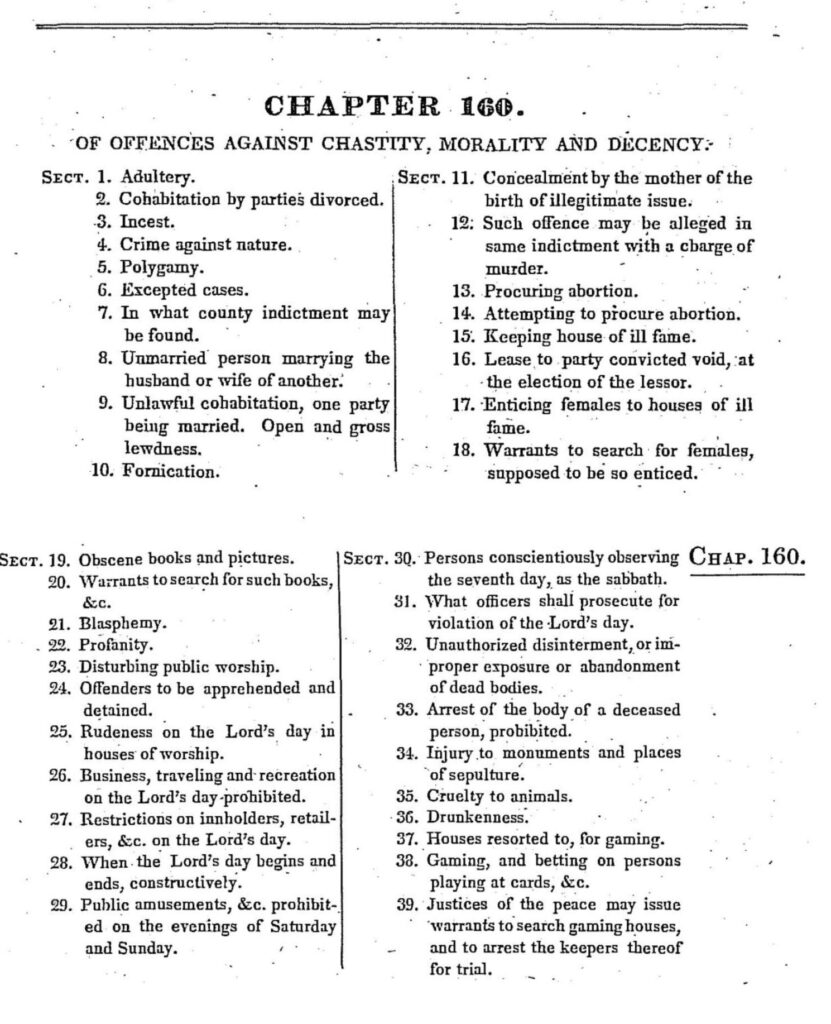
Only when the mother died did the charge escalate to second degree murder (in an abortion) or to manslaughter (in miscarriage). This escalation was a long-standing feature of Anglo-American law, when unintentional deaths occurred in the commission of a crime. Maine newspapers provide evidence of just two Maine abortion trials in the twenty years after the 1840 law, and both involved dead mothers and charges of second-degree murder. The first, in 1843, ended in acquittal. The second in 1851 led to the conviction of a mill-town doctor with a reputation for helping mill girls out. Dr. James Smith of Saco drew a life sentence at hard labor in the state prison; high public interest centered on an unusually horrifying disposal of the young woman’s body. But Smith appealed, hiring a top Portland lawyer (recently U.S. attorney general in the Polk administration, and soon to-be justice on the U.S. Supreme Court). The entire conviction was reversed on a technicality (a “writ of error”). The high court’s decision tied itself in knots parsing the words of the abortion section of the 1840 law, with paragraphs of confusing medical claims about miscarriage, fetal viability, premature births, and abortion, most of it not relevant to the writ of error. In the end, the reversal rested on the original indictment’s failure to include intent (“to destroy such child”). Dr. Smith was a free man, facing a hue and cry in the New England press.
Just two newsworthy cases in twenty years suggests a thin record of enforcement. Perhaps there was a trickle of misdemeanor cases in the county courts, yet to be uncovered? Yet absent the death of the mother, abortions rarely came to light, when all parties concerned strive to keep it private. An unusual mid-century physician in Hallowell published statistics of 1,000 births in his two-decade career and noted with mild disapproval that “cases of abortion occur too frequently in this community. . . most of them among married women.” Physicians were the most likely to know about these things, either in hearing scuttlebutt from patients (like Doctors Clark and Ford in Lincoln County), from dealing with complications caused by inexpert abortions, or from doing the procedure themselves. It is no surprise, then, that the biggest push to criminalize abortion in the U.S. came at the behest of the American Medical Association, which lobbied every state government in 1860 to pass or tighten laws on abortion.
Meanwhile, Dr. Moses Call continued to practice in Lincoln County into the 1870s, making a splash in national news circuits when his considerably younger second wife filed for divorce. Among her complaints, in the nine-day trial, was her discovery that he was a convicted abortionist; after 40 years, the Call/Chapman case finally broke into newsprint! The estranged wife was awarded custody of a young son and an extraordinary alimony of $14,450, a further indication of a Dr. Call’s unusually profitable profession. Henry Chapman married, had five children, and lived out an obscure life into his fifties as a ship joiner. Deborah also married, but not until age 31, a long delay suggesting reputational fallout from the locally infamous trial. Her marriage lasted nineteen years, until her death. Most unusually, she never bore a child.
Further Reading
James C. Mohr’s classic, Abortion in America (Oxford University Press, 1978), provides an indispensable overview of the nineteenth-century criminalization of abortion.
Cornelia Hughes Dayton gave us the first microhistory of a 1740s abortion case in Connecticut: “Taking the Trade: Abortion and Gender Relations in an Eighteenth-Century New England Village,” William and Mary Quarterly 48 (Jan. 1991): 19-49. There is a rich companion website with original documents.
Brook Lansing Mai has a recent excellent addition to the microhistory genre involving a French immigrant in New York City in 1844: “‘The helpless French girl’: Seduction Narratives in a Nineteenth-Century Abortion Trial,” Gender & History 36 (July 2024): 313-26.
Aaron Tang, a law professor, offers the most comprehensive account of state statutes up to 1868: “After Dobbs: History, Tradition, and the Uncertain Future of a Nationwide Abortion Ban,” Stanford Law Review 75 (2023).
Maine Digital Repository holds the pardon file: Moses Call Files.
Ancestry.com and Genealogybank.com provided essential sources for scoping out the cast of characters.
This article originally appeared in October 2024.
Patricia Cline Cohen is the Edward A. Dickson Emerita Professor at the University of California, Santa Barbara. She is the author of The Murder of Helen Jewett: The Life and Death of a Prostitute in Nineteenth-Century New York (Knopf, 1998) and co-author of The Flash Press: Sporting Male Weeklies in 1840s New York (University of Chicago Press, 2008). In 2020, she embarked on a study of U.S. abortion practice and law from 1800 to 1860, and she continues to make progress on her joint biography of Mary Gove Nichols and Thomas L. Nichols, who in the 1850s notoriously advocated for women’s bodily autonomy.



















